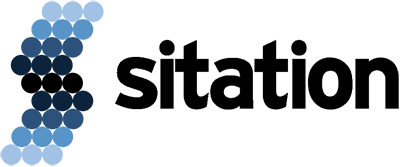In pretty much every sales meeting I’m a part of, I share with our prospect that Sitation delivers expertise in what I have come to call the “Three Pillars of PIM” – strategy, data quality, and technology.
While the notion may be self-explanatory to a degree, I thought it might be worthwhile to dive a bit deeper and explore those three areas, and how Sitation’s approach delivers scalable value to our customers.
PIM is more than Software
The first thing we have to get out of the way – those of us in the product information management and e-commerce industry have come to call the various commercial software offerings “PIM”, as a standalone toolset, much like a DAM or ERP.
But there’s a key difference in the PIM world in that PIM defines both the software platform and the many business processes, policies, stakeholders, documents, procedures, data models, workflows, etc. – you get the point – that are part of a company’s overall product information management strategy.
This is important because you can do PIM, even if you don’t have “a PIM”… managing your product data in an Excel spreadsheet is still PIM, even if it’s not the best practice.
So, to avoid confusion, just keep in mind that when I say PIM, I mean everything – all the people and tools and stuff – that goes into collecting, publishing, storing, enriching, and publishing product data in the enterprise.
So what are the Three Pillars of PIM, and why should I care?
With that out of the way, let’s talk business:
Strategy
The first pillar of PIM is strategy. A sound product information management strategy is essential for any company that wants to be successful in e-commerce. Without a clear roadmap and long-term plan, it can be difficult to make the necessary changes to stay ahead of the competition. Sitation has extensive experience in helping companies develop and implement successful strategies for PIM, including internal planning, go to market, change management, and other essentials components of the overall plan.
Data Quality
The second pillar of PIM is data quality. In order to be successful in e-commerce, you need high-quality product data. This means data that is accurate, complete, and up-to-date. Data quality is essential for delivering a good customer experience, and it’s also important for e-commerce search engine optimization (SEO).
Supporting data quality goals includes managing suppliers and their ability to submit product data to you, as well as product information you are creating.
Sitation offers a number of services to support content acquisition, enrichment, and creation, ranging from managing and mapping third party data sources to full outsourcing of content creation for your product catalog.
Technology
The third pillar of PIM is technology. As previously mentioned, PIM is more than just technology, but if we are working with clients to implement a solution, it’s important to have a platform that is scalable and can handle the volume of data that you will be dealing with. It’s also important to choose a partner who offers breadth and depth of experience in PIM implementation to make sure you get an effective implementation that will allow you to derive business value from your investment, including the integration efforts into your existing technology stack.
The Right PIM Partner Delivers on All Three Pillars!
When looking for a PIM partner, it’s important to make sure they can help you with all three pillars of PIM – strategy, data quality, and technology. Sitation has a proven track record of helping companies in all three areas, with specific offerings to support companies of different sizes, at all points in their e-commerce and PIM journey.
Learn more about how to choose an implementation partner for your PIM project, and please get in touch!




